By Greg Ellis
(Oct/Nov 2012/vol. 5 – Issue 5)
The mere fact that you are reading this magazine begs an assumption that you have an interest in and a passion for music created by Texans. For the average dude in say, Cedar Rapids, though, “Texas music” most likely means one of two things: Willie Nelson or ZZ Top. Both acts have been recognized the world over as musical ambassadors from the Lone Star State for decades, and there’s really not much room for debate regarding their respective qualifications. But here’s one key difference between the two: Once he hit his stride, all Willie ever had to do was be Willie, but ZZ Top has had to rise from the ashes more than once. The iconic trio of Billy F Gibbons, Dusty Hill, and Frank Beard may have never broken up and called it a day, but they’ve gone through more than their fair share of commercial and creative peaks and valleys, logging long miles as both one of the biggest bands in the world and taken-for-granted dinosaurs of the classic rock and early MTV eras. Their periodic “comeback” efforts haven’t always panned out, but every now and then, a new ZZ Top album comes along like this year’s La Futura that demands — and deserves — a renewed appreciation for just how good these tres hombres from Tejas can be.
“That little ole band from Texas …” It started out as just a clever marketing phrase, probably given about 45 seconds thought by some London Records flack left over from the Mantovani era. It has come to embody the essence of a band that achieved superstar status by not only managing to be flashy and unassuming, self-deprecating and swaggering all at the same time, but by somehow figuring out how to bring every flavor of the delicious Texas musical stew to the masses. The late, great Doug Sahm is probably the Top’s only competition as far as being the ultimate embodiment of all that is the soul of Texas music; and yet, for all his genius, Sahm never managed to package it to appeal to the whole country the way ZZ Top did. La Futura might not grab the mainstream the way 1983’s Eliminator did, but make no mistake: the Rick Rubin-produced set is ZZ Top’s rebound, their assertion that they are no longer in danger of just becoming a Huey Lewis-esqe revival act after 25 years of uneven records. In so doing, they pay respect to an eclectic mix of Texas music both past and present — which is basically what they have done from their very first album.
ZZ Top was formed in 1969 when Gibbons, former guitarist for Houston psychedelic band the Moving Sidewalks, got together with Beard and Hill, who had been the rhythm section for another Houston band, American Blues. The Moving Sidewalks opened some Texas dates for Jimi Hendrix and young Gibbons made enough of an impression that Hendrix later named Gibbons his favorite young guitar player when he made his only appearance on The Tonight Show. The newly formed ZZ Top signed a management deal with Bill Ham, who for decades would effectively be their very own Col. Tom Parker. Ham quickly signed them to London Records, who having just lost the Rolling Stones were probably hopeful that they had at least signed the next Grand Funk Railroad.
 Their Ham produced debut, 1971’s cleverly named ZZ Top’s First Album, split the difference between plodding rockers and more groovaliscious bluesy numbers. The latter, which included “Neighbor, Neighbor,” “Backdoor Love Affair,” and “Just Got Back From Baby’s,” set the template for the records that followed. The two real highlights on this first release were “Brown Sugar” (not the Stones tune) and “(Somebody Else Been) Shaking Your Tree.” “Brown Sugar” combines a bluesy opening section that is straight off Lightnin’ Hopkins’ front porch with a middle section that is the album’s most successful power trio jam; “(Somebody Else Been) Shaking Your Tree” shakes its rocking groove with an out-of-left-field keening steel guitar, showing that Gibbons wasn’t afraid to leave the juke joint and head to the honky-tonk. The lyrics to both songs also showcase a wry humor and sharp eye for cultural eccentricities that would become constants throughout the band’s history. Meanwhile, Gibbons’ guitar playing all through the record demonstrated a remarkable sense for restraint uncommon to most of his peers. His own distinctive vocal style wouldn’t start to develop until the following two records, though; here, his singing bears a striking resemblance to Peter Green of early Fleetwood Mac.
Their Ham produced debut, 1971’s cleverly named ZZ Top’s First Album, split the difference between plodding rockers and more groovaliscious bluesy numbers. The latter, which included “Neighbor, Neighbor,” “Backdoor Love Affair,” and “Just Got Back From Baby’s,” set the template for the records that followed. The two real highlights on this first release were “Brown Sugar” (not the Stones tune) and “(Somebody Else Been) Shaking Your Tree.” “Brown Sugar” combines a bluesy opening section that is straight off Lightnin’ Hopkins’ front porch with a middle section that is the album’s most successful power trio jam; “(Somebody Else Been) Shaking Your Tree” shakes its rocking groove with an out-of-left-field keening steel guitar, showing that Gibbons wasn’t afraid to leave the juke joint and head to the honky-tonk. The lyrics to both songs also showcase a wry humor and sharp eye for cultural eccentricities that would become constants throughout the band’s history. Meanwhile, Gibbons’ guitar playing all through the record demonstrated a remarkable sense for restraint uncommon to most of his peers. His own distinctive vocal style wouldn’t start to develop until the following two records, though; here, his singing bears a striking resemblance to Peter Green of early Fleetwood Mac.
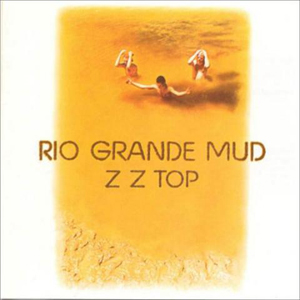 The Top’s First Album was not terribly successful, but the band toured relentlessly and began to develop a good following based on their explosive live shows. Ham’s strategy had them opening shows over and over again in the same markets. This laid an extremely solid base for their second album, which was quite a leap forward both artistically and commercially. Rio Grande Mud (1972) boasted better overall songs and much improved, heavier production (once again by Ham). There was still about a 60-40 ratio between strong and weak material, but the strong was far stronger than on the debut, including a couple of airplay gatherers in “Francine” and the Top’s first bona-fide classic, “Just Got Paid.” Gibbons showed off his slide guitar prowess on “Apologies to Pearly” (Pearly being his Les Paul), and Hill emerged as a vocalist on both “Francine” and “Chevrolet,” another jaunty rocker that garnered quite a bit of radio spins. Rio Grande Mud was also the album where the trio began to assert its “Texas-ness,” with tracks like “Bar-B-Q” and “Sure Got Cold After the Rain Fell” conveying feelings, tastes, and experiences that most any Texas denizen could readily relate to.
The Top’s First Album was not terribly successful, but the band toured relentlessly and began to develop a good following based on their explosive live shows. Ham’s strategy had them opening shows over and over again in the same markets. This laid an extremely solid base for their second album, which was quite a leap forward both artistically and commercially. Rio Grande Mud (1972) boasted better overall songs and much improved, heavier production (once again by Ham). There was still about a 60-40 ratio between strong and weak material, but the strong was far stronger than on the debut, including a couple of airplay gatherers in “Francine” and the Top’s first bona-fide classic, “Just Got Paid.” Gibbons showed off his slide guitar prowess on “Apologies to Pearly” (Pearly being his Les Paul), and Hill emerged as a vocalist on both “Francine” and “Chevrolet,” another jaunty rocker that garnered quite a bit of radio spins. Rio Grande Mud was also the album where the trio began to assert its “Texas-ness,” with tracks like “Bar-B-Q” and “Sure Got Cold After the Rain Fell” conveying feelings, tastes, and experiences that most any Texas denizen could readily relate to.
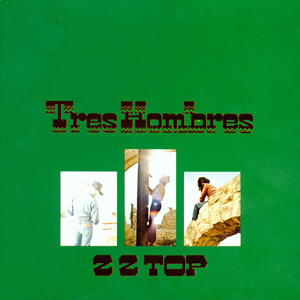 With the success of Rio Grande Mud and constant touring boosting the band to headliner status in Texas and South, the pressure was on to keep the forward momentum going. ZZ Top’s third album needed to be really good. And it was. 1973’s Tres Hombres is the definitive early period record from the Top; its songs still make up the bulk of the band’s live set. The rockers ROCK, the jokes are funny, and the biggest hit (“La Grange”) is about a whorehouse. The second biggest is about Jesus taking a bus trip (“Jesus Just Left Chicago”). But “Master of Sparks” is every bit as good as those two hits if not even better; it’s a surreal tale set in far West Houston that is driven by a claustrophobic riff that sounds like Free meets Booker T and the MGs. There’s actually not a weak track on the whole album, and Tres Hombres still sounds as good today as it did the year it came out — though CDs and certainly downloads don’t do justice to the original vinyl packaging, which featured an epic Tex-Mex platter spread across the inside gatefold. The photo came courtesy of Leo’s, a Houston Mexican food emporium whose eponymous owner had served with Pancho Villa.
With the success of Rio Grande Mud and constant touring boosting the band to headliner status in Texas and South, the pressure was on to keep the forward momentum going. ZZ Top’s third album needed to be really good. And it was. 1973’s Tres Hombres is the definitive early period record from the Top; its songs still make up the bulk of the band’s live set. The rockers ROCK, the jokes are funny, and the biggest hit (“La Grange”) is about a whorehouse. The second biggest is about Jesus taking a bus trip (“Jesus Just Left Chicago”). But “Master of Sparks” is every bit as good as those two hits if not even better; it’s a surreal tale set in far West Houston that is driven by a claustrophobic riff that sounds like Free meets Booker T and the MGs. There’s actually not a weak track on the whole album, and Tres Hombres still sounds as good today as it did the year it came out — though CDs and certainly downloads don’t do justice to the original vinyl packaging, which featured an epic Tex-Mex platter spread across the inside gatefold. The photo came courtesy of Leo’s, a Houston Mexican food emporium whose eponymous owner had served with Pancho Villa.
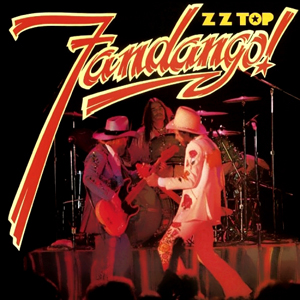 ZZ Top’s next album, 1975’s Fandango!, was a half-live, half-studio affair, and the band’s second consecutive gold-certified and Top 10-selling release. There may have only been six new studio tracks on the album, but they were six of the band’s strongest songs ever. Of course everybody and their grandmother knows “Tush,” the album’s Top-20 charting ode to single mindedness. “Heard It On the X,” clocking it at just under two-and-a-half blistering minutes and shot through with one of Gibbons’ sharpest riffs, was the Top’s tribute to the mega-wattage Mexican border radio stations that blasted blues, rock ’n’ roll and medicine-show style advertisements and religious programming clear up to Canada (“Country Jesus, hillbilly blues/That’s where I learned my licks!”) “Balinese” and “Mexican Blackbird” also nodded to life in Texas, with the latter being the most overtly “country” song the band had ever recorded. And “Nasty Dogs and Funky Kings” was just another straight-up classic matching Gibbons’ wry lyrics with brain-shredding riffage. All of that (plus the slow-burning “Blue Jean Blues”) was on side two, which more than made up for the three considerably less satisfying — and rushed sounding — live tracks (“Thunderbird,” “Jailhouse Rock” and the 10-minute “Backdoor Medley”) on side one. The opening “Thunderbird” was by far the best. It’s a cover of the Nightcaps classic “Wine Wine Wine,” a huge regional hit in Texas; when the band went to clear the publishing they realized the Nightcaps had never copyrighted the song, so the name was changed and a new ZZ Top song was born.
ZZ Top’s next album, 1975’s Fandango!, was a half-live, half-studio affair, and the band’s second consecutive gold-certified and Top 10-selling release. There may have only been six new studio tracks on the album, but they were six of the band’s strongest songs ever. Of course everybody and their grandmother knows “Tush,” the album’s Top-20 charting ode to single mindedness. “Heard It On the X,” clocking it at just under two-and-a-half blistering minutes and shot through with one of Gibbons’ sharpest riffs, was the Top’s tribute to the mega-wattage Mexican border radio stations that blasted blues, rock ’n’ roll and medicine-show style advertisements and religious programming clear up to Canada (“Country Jesus, hillbilly blues/That’s where I learned my licks!”) “Balinese” and “Mexican Blackbird” also nodded to life in Texas, with the latter being the most overtly “country” song the band had ever recorded. And “Nasty Dogs and Funky Kings” was just another straight-up classic matching Gibbons’ wry lyrics with brain-shredding riffage. All of that (plus the slow-burning “Blue Jean Blues”) was on side two, which more than made up for the three considerably less satisfying — and rushed sounding — live tracks (“Thunderbird,” “Jailhouse Rock” and the 10-minute “Backdoor Medley”) on side one. The opening “Thunderbird” was by far the best. It’s a cover of the Nightcaps classic “Wine Wine Wine,” a huge regional hit in Texas; when the band went to clear the publishing they realized the Nightcaps had never copyrighted the song, so the name was changed and a new ZZ Top song was born.
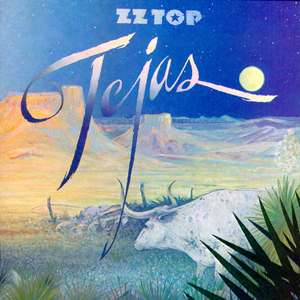 A year after Fandango’s release, ZZ Top embarked on their epic “World Wide Texas Tour,” a blockbuster 92-date run (broken into three legs over two years) that packed arenas and stadiums across the country and marked the little ole band’s true arrival into the ranks of the superstar elite. But their fifth album, Tejas — released in November 1976, the day after the first leg of the tour ended — seemed a disappointment at the time. The band was clearly a little road weary at the time of its recording, and even the best songs on the album were not as memorable as the studio cuts on Fandango! The sales also took a little dip, with the album peaking at No. 17 (several spots below its predecessor). With hindsight, though, Tejas did provide a couple of glimpses as to where the band was headed, and brought a completely different guitar sound to the table. Instead of sticking with his sustainy Gibson Les Paul thickness of tone, Gibbons relied almost exclusively on the more brittle, twangy sound of Fenders. The album’s three radio jams, “It Must Be Love,” “Arrested For Driving While Blind,” and “El Diablo” were all solid, typically hooky Top songs, with “El Diablo” in particular signifying an evolving sound. The other standouts on Tejas are both anomalies. “She’s a Heartbreaker” is a straight-up country song — and a real solid one at that — while the peaceful “Asleep in the Desert” is a lovely instrumental.
A year after Fandango’s release, ZZ Top embarked on their epic “World Wide Texas Tour,” a blockbuster 92-date run (broken into three legs over two years) that packed arenas and stadiums across the country and marked the little ole band’s true arrival into the ranks of the superstar elite. But their fifth album, Tejas — released in November 1976, the day after the first leg of the tour ended — seemed a disappointment at the time. The band was clearly a little road weary at the time of its recording, and even the best songs on the album were not as memorable as the studio cuts on Fandango! The sales also took a little dip, with the album peaking at No. 17 (several spots below its predecessor). With hindsight, though, Tejas did provide a couple of glimpses as to where the band was headed, and brought a completely different guitar sound to the table. Instead of sticking with his sustainy Gibson Les Paul thickness of tone, Gibbons relied almost exclusively on the more brittle, twangy sound of Fenders. The album’s three radio jams, “It Must Be Love,” “Arrested For Driving While Blind,” and “El Diablo” were all solid, typically hooky Top songs, with “El Diablo” in particular signifying an evolving sound. The other standouts on Tejas are both anomalies. “She’s a Heartbreaker” is a straight-up country song — and a real solid one at that — while the peaceful “Asleep in the Desert” is a lovely instrumental.
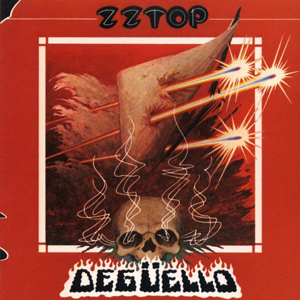 After spending a good half of 1977 continuing their “World Wide Texas Tour,” the band took an overdue break to recharge — and reinvent itself. They emerged two years later with a new look and a new label. Ham negotiated a deal with Warner Bros. Records that was anything but a sure thing. A lot had changed on the popular music scene during their hiatus, with the emergence of punk and new wave on one end of the spectrum and disco on the other, and no one really knew how a traditional power trio steeped in Texas blues and boogie would fare in that new marketplace. Quite well, as it turned out. The band’s 1979 Warner Bros. debut, Degüello, peaked at No. 24 but still went on to became their biggest album to date at the time, and with good reason. Gibbons was back to playing his more signature, thicker guitar tones, and the songs were all a good deal hookier than anything on Tejas. But they also grooved in a manner that neatly straddled the line between classic Top and the era’s more contemporary sounds, not unlike the Rolling Stones’ “Miss You” single from the previous year’s Some Girls. In general, the best tracks on the album are the best know: “Cheap Sunglasses,” “Fool for Your Stockings,” “I’m Bad, I’m Nationwide,” and the cover of Sam and Dave’s “I Thank You.” But the last track, “Ester Be the One,” is the set’s real sleeper, with its quirky lyrics detailing the exploits of the murderous Ester to a Dire Straits/Creedence groove that just won’t quit.
After spending a good half of 1977 continuing their “World Wide Texas Tour,” the band took an overdue break to recharge — and reinvent itself. They emerged two years later with a new look and a new label. Ham negotiated a deal with Warner Bros. Records that was anything but a sure thing. A lot had changed on the popular music scene during their hiatus, with the emergence of punk and new wave on one end of the spectrum and disco on the other, and no one really knew how a traditional power trio steeped in Texas blues and boogie would fare in that new marketplace. Quite well, as it turned out. The band’s 1979 Warner Bros. debut, Degüello, peaked at No. 24 but still went on to became their biggest album to date at the time, and with good reason. Gibbons was back to playing his more signature, thicker guitar tones, and the songs were all a good deal hookier than anything on Tejas. But they also grooved in a manner that neatly straddled the line between classic Top and the era’s more contemporary sounds, not unlike the Rolling Stones’ “Miss You” single from the previous year’s Some Girls. In general, the best tracks on the album are the best know: “Cheap Sunglasses,” “Fool for Your Stockings,” “I’m Bad, I’m Nationwide,” and the cover of Sam and Dave’s “I Thank You.” But the last track, “Ester Be the One,” is the set’s real sleeper, with its quirky lyrics detailing the exploits of the murderous Ester to a Dire Straits/Creedence groove that just won’t quit.
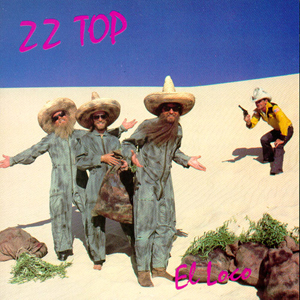 Although Degüello was certainly a strong enough album to merit attention for its songs alone, its release also marked ZZ Top’s stunning transformation into a visual act. Gibbons and Hill had both grown chest-length beards during the long break, introducing arguably one of the most iconic band “looks” in rock history — and an edge that would come in mighty handy in the next few years as things continued to change in the music biz. That, combined with Degüello’s platinum sales and another successful tour, set ZZ Top up for what seemed would be a smooth cruise into the ’80s. But they actually started the decade with a sputter. It’s respectable sales and couple of chart hits notwithstanding, 1981’s El Loco was an artistic dud. With the exception of the uncharacteristically pretty “Leila,” even the “good” songs on the album suck. Both “Pearl Necklace” and “Tube Snake Boogie” were puerile enough to catch on with rock radio at the time, and the introduction of synths to the ZZ mix proved the band was still game with staying contemporary. Problem was, they had yet to find their comfort level with them. El Loco seemed an ominous sign that the excellent Degüello might have been a fluke.
Although Degüello was certainly a strong enough album to merit attention for its songs alone, its release also marked ZZ Top’s stunning transformation into a visual act. Gibbons and Hill had both grown chest-length beards during the long break, introducing arguably one of the most iconic band “looks” in rock history — and an edge that would come in mighty handy in the next few years as things continued to change in the music biz. That, combined with Degüello’s platinum sales and another successful tour, set ZZ Top up for what seemed would be a smooth cruise into the ’80s. But they actually started the decade with a sputter. It’s respectable sales and couple of chart hits notwithstanding, 1981’s El Loco was an artistic dud. With the exception of the uncharacteristically pretty “Leila,” even the “good” songs on the album suck. Both “Pearl Necklace” and “Tube Snake Boogie” were puerile enough to catch on with rock radio at the time, and the introduction of synths to the ZZ mix proved the band was still game with staying contemporary. Problem was, they had yet to find their comfort level with them. El Loco seemed an ominous sign that the excellent Degüello might have been a fluke.
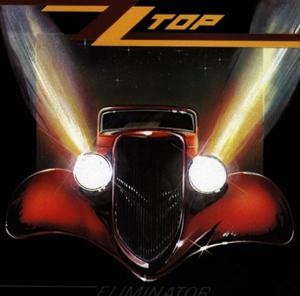 And then came the game changer. Hearing “Gimme All Lovin’” on the radio for the first time in 1983 was a genuine “holy shit!” moment for even the most seasoned (and jaded) of ZZ Top fans. It sounded so focused, so hooky, and so, so good, it left really no room for doubt that the tres hombres were back on track. And sure enough, Eliminator was an absolute tour de force. Ham may have produced, but a lot if not most of the credit for the album’s newly polished ZZ Top sound must surely go to engineer Terry Manning, who brought the band to his home base, Memphis’ Ardent Studios. The whole album positively shimmers in synths, but they’re utilized with a level of ultra-confidence that’s light years removed from the sense of awkward flirtation heard on El Loco. The first six songs — including the monster hits “Gimme All Your Lovin’,” “Sharp Dressed Man,” and “Legs” — were all as hooky, rockin’, and memorable as the six-pack of keepers on the studio side of Fandango!, but they were presented with a slickness and clarity that was never before apparent on any of the band’s albums. Also different was the lack of a single reference to Texas, which in hindsight seems rather prophetic: the Lone Star State just wasn’t quite big enough to keep ZZ Top all to itself anymore — especially after the rapidly emerging MTV revolution caught Top fever. The band dived right into that new frontier with a vengeance, appearing in a series of memorable videos featuring cars, girls, and just enough glimpses of themselves rocking their trademark beards and spinning fuzzy guitars to cement their image in the minds of an entire new generation of fans. It all worked a charm, with Eliminator going on to sell more than 10 million copies.
And then came the game changer. Hearing “Gimme All Lovin’” on the radio for the first time in 1983 was a genuine “holy shit!” moment for even the most seasoned (and jaded) of ZZ Top fans. It sounded so focused, so hooky, and so, so good, it left really no room for doubt that the tres hombres were back on track. And sure enough, Eliminator was an absolute tour de force. Ham may have produced, but a lot if not most of the credit for the album’s newly polished ZZ Top sound must surely go to engineer Terry Manning, who brought the band to his home base, Memphis’ Ardent Studios. The whole album positively shimmers in synths, but they’re utilized with a level of ultra-confidence that’s light years removed from the sense of awkward flirtation heard on El Loco. The first six songs — including the monster hits “Gimme All Your Lovin’,” “Sharp Dressed Man,” and “Legs” — were all as hooky, rockin’, and memorable as the six-pack of keepers on the studio side of Fandango!, but they were presented with a slickness and clarity that was never before apparent on any of the band’s albums. Also different was the lack of a single reference to Texas, which in hindsight seems rather prophetic: the Lone Star State just wasn’t quite big enough to keep ZZ Top all to itself anymore — especially after the rapidly emerging MTV revolution caught Top fever. The band dived right into that new frontier with a vengeance, appearing in a series of memorable videos featuring cars, girls, and just enough glimpses of themselves rocking their trademark beards and spinning fuzzy guitars to cement their image in the minds of an entire new generation of fans. It all worked a charm, with Eliminator going on to sell more than 10 million copies.
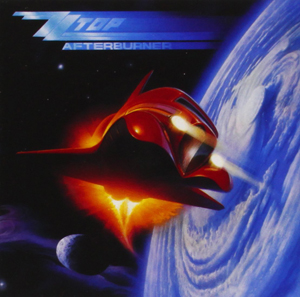 Although the hits off of Eliminator have been played to death over the years, the album still delivers genuine kicks. By contrast, the hugely successful follow-up, Afterburner (1985), is so sonically dated you can almost narrow it down to the the week it was recorded. Listening to it today (or attempting to), it’s painfully obvious that the band’s focus at the time had shifted from songs to videos, from ideas to style. The lead-off single, “Sleeping Bag,” is still an enjoyable piece of ’80s antiquity, but the rest is flat-out unlistenable. The tour that supported the album at the time wasn’t much better, with so much electronic crap going on that the band could have just sent a video in their stead. Both the album and tour continued ZZ Top’s commercial hot streak, but musically they were running on fumes.
Although the hits off of Eliminator have been played to death over the years, the album still delivers genuine kicks. By contrast, the hugely successful follow-up, Afterburner (1985), is so sonically dated you can almost narrow it down to the the week it was recorded. Listening to it today (or attempting to), it’s painfully obvious that the band’s focus at the time had shifted from songs to videos, from ideas to style. The lead-off single, “Sleeping Bag,” is still an enjoyable piece of ’80s antiquity, but the rest is flat-out unlistenable. The tour that supported the album at the time wasn’t much better, with so much electronic crap going on that the band could have just sent a video in their stead. Both the album and tour continued ZZ Top’s commercial hot streak, but musically they were running on fumes.
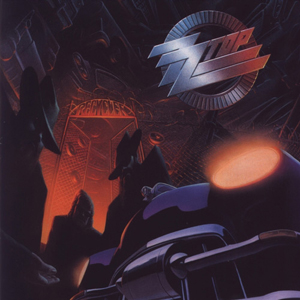 Here’s a tip. When a band is already working a formula to death, perhaps calling a record Recycler (1990) is not such a hot idea. One might even be tempted to call this one worse than Afterburner, but it does contains two beacons of light. “My Head’s in Mississippi” is a raunchy blues- rock number that could have been on Degüello or even Fandango! — and not just because, for the first time in three albums, Texas got a name check. The other high point was “Doubleback,” which could have easily been the seventh great song on Eliminator. Instead, it was featured in Back to the Future III (along with Gibbons, Hill, and Beard themselves.) Other than those two jewels, though, Recycler is an aptly titled wasteland filled with rewrites and half rights.
Here’s a tip. When a band is already working a formula to death, perhaps calling a record Recycler (1990) is not such a hot idea. One might even be tempted to call this one worse than Afterburner, but it does contains two beacons of light. “My Head’s in Mississippi” is a raunchy blues- rock number that could have been on Degüello or even Fandango! — and not just because, for the first time in three albums, Texas got a name check. The other high point was “Doubleback,” which could have easily been the seventh great song on Eliminator. Instead, it was featured in Back to the Future III (along with Gibbons, Hill, and Beard themselves.) Other than those two jewels, though, Recycler is an aptly titled wasteland filled with rewrites and half rights.
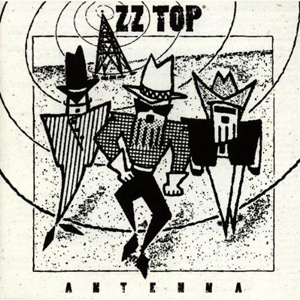 One thing ZZ Top had going for them that was still firing on all cylinders at the time though was a shark of a manager in Ham, who was able to get RCA Records to pony up $35 million for the band. (Ham would continue to manage ZZ Top up until 2006.) The move to the new label was accompanied by rumblings that a “return to form” was on its way, stoking fan anticipation for for 1994’s Antenna. But despite proving to be a modest improvement on its two predecessors, the album was another two-hit wonder. The lead single “Pincussion” was a quirky rocker that maybe wasn’t their greatest single, but it sounded pretty good and it rocked. And the slow burner “Breakaway” was a GREAT song — their best in a decade for sure. After that, though — nothing really; just a lot of mediocre songs filled with a lot of great guitar playing. Gibbons was clearly enjoying the chance to really work his chops again, but apart from those two notable standouts, the material was pretty lame.
One thing ZZ Top had going for them that was still firing on all cylinders at the time though was a shark of a manager in Ham, who was able to get RCA Records to pony up $35 million for the band. (Ham would continue to manage ZZ Top up until 2006.) The move to the new label was accompanied by rumblings that a “return to form” was on its way, stoking fan anticipation for for 1994’s Antenna. But despite proving to be a modest improvement on its two predecessors, the album was another two-hit wonder. The lead single “Pincussion” was a quirky rocker that maybe wasn’t their greatest single, but it sounded pretty good and it rocked. And the slow burner “Breakaway” was a GREAT song — their best in a decade for sure. After that, though — nothing really; just a lot of mediocre songs filled with a lot of great guitar playing. Gibbons was clearly enjoying the chance to really work his chops again, but apart from those two notable standouts, the material was pretty lame.
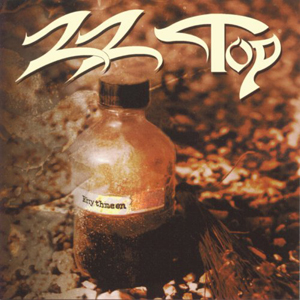 Fortunately for both fans and the band, 1996’s Rhythmeen was a much more solid effort, certainly their best album at the time since Eliminator. Highlights included the surprisingly straight-forward, Chicago-style blues of “What’s Up With That” and the odd yet compelling “Black Fly” and “Humbucking, Part 2.” Once again Gibbons’ ever evolving guitar playing was the star of the show, but this time he had worthwhile songs to hang his licks on.
Fortunately for both fans and the band, 1996’s Rhythmeen was a much more solid effort, certainly their best album at the time since Eliminator. Highlights included the surprisingly straight-forward, Chicago-style blues of “What’s Up With That” and the odd yet compelling “Black Fly” and “Humbucking, Part 2.” Once again Gibbons’ ever evolving guitar playing was the star of the show, but this time he had worthwhile songs to hang his licks on.
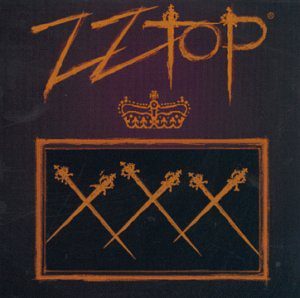 You can usually find Rhythmeen for .99 cents in the CD dump bins. Get it. Skip that used copy of 1999’s XXX, though, because it just plain stinks. There’s just nothing there: no songs, no fun, and even the guitar playing is repetitious and flat. XXX is hands down the Top’s worst record; even Afterburner doesn’t come close.
You can usually find Rhythmeen for .99 cents in the CD dump bins. Get it. Skip that used copy of 1999’s XXX, though, because it just plain stinks. There’s just nothing there: no songs, no fun, and even the guitar playing is repetitious and flat. XXX is hands down the Top’s worst record; even Afterburner doesn’t come close.
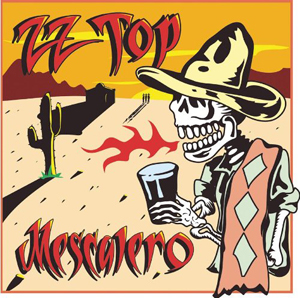 After XXX, just about anything ZZ Top came out with was bound to be an improvement. Mescalero (2002) was that and a fair bit more — at least half of a really good record, actually. The title track was exceptionally solid, kinda weird and kinda classic at the same time; it was their strongest single since “Doubleback,” but never really took off on radio. “Goin’ So Good” was a fantastic take on a South Texas ballad with a great set of lyrics and an unbelievably poignant vocal from Gibbons, and “What Would You Do” was a zydeco-tinged two-step that could fill a dance floor in about 10 seconds. Mescalero had its share of blatant filler, too, but then again, so did Eliminator. Had this been the Top’s last album, it would have been a decent note to go out on.
After XXX, just about anything ZZ Top came out with was bound to be an improvement. Mescalero (2002) was that and a fair bit more — at least half of a really good record, actually. The title track was exceptionally solid, kinda weird and kinda classic at the same time; it was their strongest single since “Doubleback,” but never really took off on radio. “Goin’ So Good” was a fantastic take on a South Texas ballad with a great set of lyrics and an unbelievably poignant vocal from Gibbons, and “What Would You Do” was a zydeco-tinged two-step that could fill a dance floor in about 10 seconds. Mescalero had its share of blatant filler, too, but then again, so did Eliminator. Had this been the Top’s last album, it would have been a decent note to go out on.
For a while, it looked like Mescalero was going to be the band’s last studio effort. They continued to tour throughout the rest of the decade, dividing their time between small amphitheater and casino shows and shared headlining gigs with the likes of Aerosmith and Lynyrd Skynrd. They did manage to release a new live CD and DVD on Eagle Records, Live From Texas (2008), but the track list — containing nothing from after Afterburner — suggested that they were content to ride nostalgia into the sunset. Their old label, Warner Bros., helped them along with a pair of new compilations, the two-disc The Very Best of ZZ Top: Rancho Texicano (2004) and the elaborately packaged, four-disc box set, Chrome, Smoke & BBQ (2003). 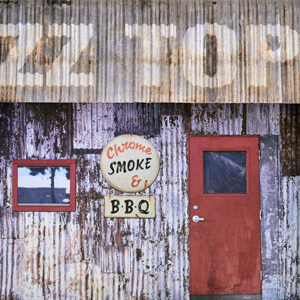 The box didn’t include anything from the band’s four RCA albums, but it did feature a light smattering of rarities — including three tracks from Gibbons’ pre-ZZ Top band, the Moving Sidewalks, and ZZ Top’s first single, “Salt Lick,” which was recorded for Scat Records. The band’s smoking cover of the 13th Floor Elevators song “Reverberation (Doubt),” which was originally included on the 1990 multi-artist Roky Erickson tribute album, When the Pyramid Meets the Eye, is another treat. “Gun Love” and a cover of Elvis’ “Viva Las Vegas,” both of which were initially included as “new” songs on a previous greatest hits set from 1992, were also thrown in the box, but they’re still rather weak.
The box didn’t include anything from the band’s four RCA albums, but it did feature a light smattering of rarities — including three tracks from Gibbons’ pre-ZZ Top band, the Moving Sidewalks, and ZZ Top’s first single, “Salt Lick,” which was recorded for Scat Records. The band’s smoking cover of the 13th Floor Elevators song “Reverberation (Doubt),” which was originally included on the 1990 multi-artist Roky Erickson tribute album, When the Pyramid Meets the Eye, is another treat. “Gun Love” and a cover of Elvis’ “Viva Las Vegas,” both of which were initially included as “new” songs on a previous greatest hits set from 1992, were also thrown in the box, but they’re still rather weak.
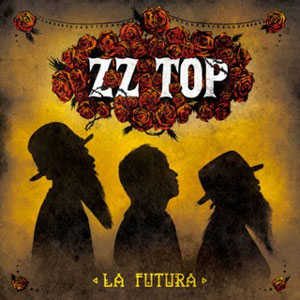 With their RCA deal in the rearview mirror and the just-play-the-hits vibe that seemed to be the rule at their concerts over the last 10 years, the last thing anyone expected from ZZ Top was the delivery of not only a new record, but an honest-to-goodness highlight of their career. But that’s exactly what the band and producer Rick Rubin (no stranger to helming successful comebacks) delivered with 2012’s La Futura. Released on Rubin’s Universal imprint American Recordings, La Futura is their most cohesive record since Degüello: Its 10 tracks are nothing but pure, straightforward, 100-proof ZZ Top. The first single, “I Gotsta Get Paid,” is a remake of Houston rapper DJ DMD’s classic “25 Lighters.” Leave it to Gibbons to recognize and appreciate the relationship between blues and rap and fuse the two in absolutely brilliant fashion. The rest of the album is just as rewarding; the rockers are probably their best since Fandango!, and the slower ones — most notably “It’s Too Easy” and “Over You” — are really moving and a lot darker than you’d expect, with a sort of Tom Waits/Bob Dylan vibe. The rock standouts include “Chartreuse,” a classic ZZ choogler, and “Have Mercy,” which grooves like “Jesus Just Left Chicago.” And the filler? For the first time since Tres Hombres, there really isn’t any. La Futura is more than just a shocking return to form: It’s that little ole band from Texas’ best record in at least 30 years.
With their RCA deal in the rearview mirror and the just-play-the-hits vibe that seemed to be the rule at their concerts over the last 10 years, the last thing anyone expected from ZZ Top was the delivery of not only a new record, but an honest-to-goodness highlight of their career. But that’s exactly what the band and producer Rick Rubin (no stranger to helming successful comebacks) delivered with 2012’s La Futura. Released on Rubin’s Universal imprint American Recordings, La Futura is their most cohesive record since Degüello: Its 10 tracks are nothing but pure, straightforward, 100-proof ZZ Top. The first single, “I Gotsta Get Paid,” is a remake of Houston rapper DJ DMD’s classic “25 Lighters.” Leave it to Gibbons to recognize and appreciate the relationship between blues and rap and fuse the two in absolutely brilliant fashion. The rest of the album is just as rewarding; the rockers are probably their best since Fandango!, and the slower ones — most notably “It’s Too Easy” and “Over You” — are really moving and a lot darker than you’d expect, with a sort of Tom Waits/Bob Dylan vibe. The rock standouts include “Chartreuse,” a classic ZZ choogler, and “Have Mercy,” which grooves like “Jesus Just Left Chicago.” And the filler? For the first time since Tres Hombres, there really isn’t any. La Futura is more than just a shocking return to form: It’s that little ole band from Texas’ best record in at least 30 years.
MR. RECORD MAN’S TOP 5 ZZ TOP ALBUMS
1. Tres Hombres, 1973
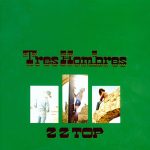 The one where it all came together. Not a weak cut on it, though there are a few you may have heard more than you need to (most notably, “La Grange.”) Essential tracks: “Master of Sparks,” “Have You Heard,” “Waitin’ for the Bus/Jesus Just Left Chicago”
The one where it all came together. Not a weak cut on it, though there are a few you may have heard more than you need to (most notably, “La Grange.”) Essential tracks: “Master of Sparks,” “Have You Heard,” “Waitin’ for the Bus/Jesus Just Left Chicago”
2. Eliminator, 1983
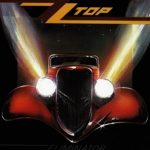 The monster. Yes, we’ve all heard — and, thanks to MTV, seen — the hits aplenty. And yes, the album’s successful formula led ZZ Top down a dark alley for at least a decade. But crank “side one” as loud as your car stereo can handle, and there’s no denying its horsepower. To wit: “Gimme All Your Lovin’,” “Got Me Under Pressure,” “Legs,” “Sharp Dressed Man,” “You Got The Six”
The monster. Yes, we’ve all heard — and, thanks to MTV, seen — the hits aplenty. And yes, the album’s successful formula led ZZ Top down a dark alley for at least a decade. But crank “side one” as loud as your car stereo can handle, and there’s no denying its horsepower. To wit: “Gimme All Your Lovin’,” “Got Me Under Pressure,” “Legs,” “Sharp Dressed Man,” “You Got The Six”
3. Fandango!, 1975
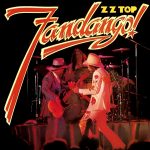 The live tracks are disappointing, but the studio side is the best side of any of their albums. Gibbons’ confidence as a songwriter and guitarist is present in every second. Every song is a classic. Best of the best: “Nasty Dogs and Funky Kings,” “Mexican Blackbird,” “Heard it on the X”
The live tracks are disappointing, but the studio side is the best side of any of their albums. Gibbons’ confidence as a songwriter and guitarist is present in every second. Every song is a classic. Best of the best: “Nasty Dogs and Funky Kings,” “Mexican Blackbird,” “Heard it on the X”
4. La Futura, 2012
 Like an old friend showing up after years away, La Futura seems to pick up just where Fandango! left off. Sharp, catchy, and witty, this is one ZZ Top comeback that delivers in spades. Top tracks: “I Gotsta Get Paid,” “Have Mercy Baby,” “It’s Too Easy”
Like an old friend showing up after years away, La Futura seems to pick up just where Fandango! left off. Sharp, catchy, and witty, this is one ZZ Top comeback that delivers in spades. Top tracks: “I Gotsta Get Paid,” “Have Mercy Baby,” “It’s Too Easy”
5. Rio Grande Mud, 1972
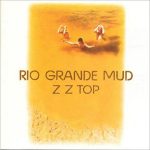 Wait, what? This one over Degüello? Yep. Rio Grande Mud may not be as consistent as Degüello, but Degüello doesn’t have “Just Got Paid.” By all means seek out Degüello, too, but the good songs on Rio Grande Mud are SO good that the Top’s underrated second album deserves a special shout out. Highlights: “Just Got Paid,” “Francine,” “Sure Got Cold After the Rain Fell”
Wait, what? This one over Degüello? Yep. Rio Grande Mud may not be as consistent as Degüello, but Degüello doesn’t have “Just Got Paid.” By all means seek out Degüello, too, but the good songs on Rio Grande Mud are SO good that the Top’s underrated second album deserves a special shout out. Highlights: “Just Got Paid,” “Francine,” “Sure Got Cold After the Rain Fell”




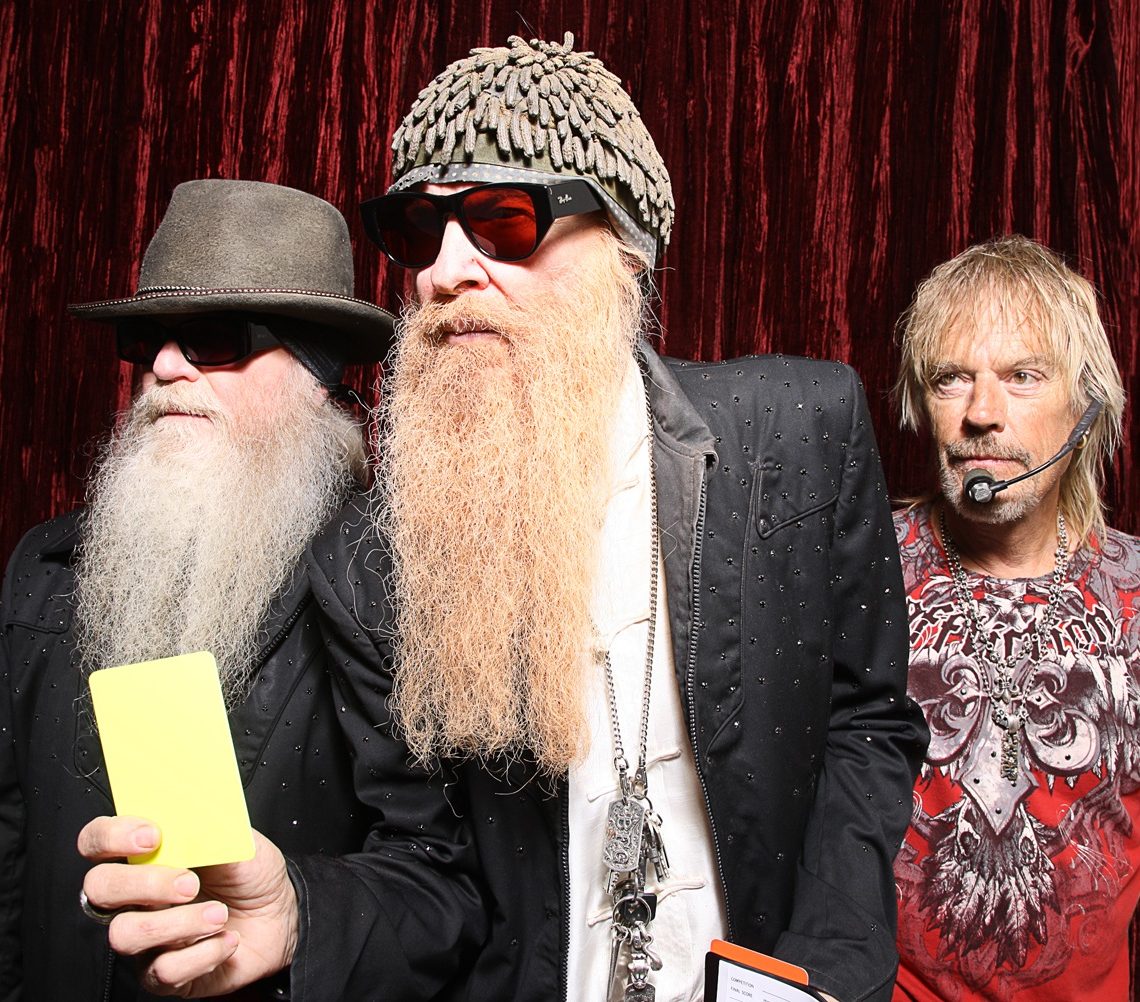



No Comment